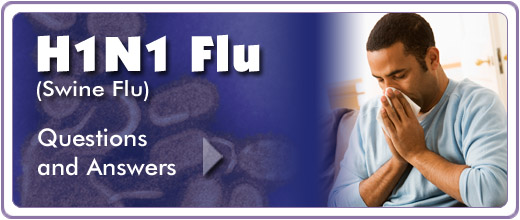Preventing the Spread of H1N1 in Child-Care Settings:
Remind Children and Child-Care Providers to keep hands clean
- Child-care providers and children should use soap and water to wash hands frequently or use an alcohol-based hand cleaner frequently if hand washing amenities are not readily available.
- Child-care providers should wash their hands between contacts with infants and children, such as before meals or feedings, after wiping the child’s nose or mouth, after touching objects such as tissues or surfaces soiled with saliva or nose drainage, after diaper changes, and after assisting a child with toileting.
- Child-care providers should wash the hands of infants and toddlers frequently or use an alcohol-based hand cleaner frequently if hand washing amenities are not readily available.
- Encourage children to wash hands frequently. Teach children to wash hands for 15-20 seconds (long enough for children to sing the “Happy Birthday” song twice).
- Oversee the use of alcohol-based hand cleaner by children and avoid using these on the sensitive skin of infants and toddlers.
- When using alcohol-based hand cleaner rub hands thoroughly until the alcohol has dried.
- Keep alcohol-based hand cleaner out of the reach of children to prevent unsupervised use.
- Ensure that sink locations and restrooms are stocked with soap and paper towels or working hand dryers.
- Ensure that each child care room and diaper changing area is supplied with alcohol-based hand cleaner when sinks for washing hands are not readily accessible. Alcohol-based hand cleaners are not recommended when hands are visibly soiled.
Keep the child care environment clean and make sure that supplies are available.
- Clean frequently touched surfaces, toys, and commonly shared items at least daily and when visibly soiled.
- Toys that have been mouthed should be removed from use by another child until they can be cleaned and sanitized.
- Use an Environmental Protection Agency (EPA)-registered household disinfectant labeled for activity against bacteria and viruses, an EPA-registered hospital disinfectant, or EPA-registered chlorine bleach/hypochlorite solution. Always follow label instructions when using any EPA-registered disinfectant. If EPA-registered chlorine bleach is not available and a generic (i.e., store brand) chlorine bleach is used, mix ¼ cup chlorine bleach with one (1) gallon of cool water.
- Keep disinfectants out of the reach of children.
Remind children and care providers to cover their noses and mouths when sneezing or coughing.
- Advise children and care providers to cover their noses and mouths with a tissue when sneezing or coughing, and to put their used tissue in a waste basket.
- Make sure that tissues are available in all nurseries, child care rooms, and common areas such as reading rooms, classrooms, and rooms where meals are provided.
- Encourage care providers and children to wash their hands or use an alcohol-based hand rub as soon as possible, if they have sneezed or coughed on their hands.
Observe all children for symptoms of respiratory illness
- Prior to parents leaving a child at the child care setting, check to see if the child has symptoms of influenza-like illness to avoid exposing non-infected children and child-care providers.
- Observe closely all infants and children for symptoms of respiratory illness. Notify the parent if a child develops a fever (over 99˚F under the arm, over 99.5˚F orally, or over 100.0˚F rectally) or chills, cough, sore throat, headache, or muscle aches.
- Send sick children home, if possible, and advise the parent to contact the child’s doctor. Separate the child who is sick from other children until the parent or caregiver takes the child home.
- If you observe children with symptoms of respiratory illness, report these symptoms to your local health department or local health authority.
- Infants and young children can become quite ill with influenza very quickly, and might require urgent medical attention and possibly hospitalization. If a child has difficulty breathing, is lethargic, or appears to be worsening rapidly, consider calling a physician or 911 in addition to notifying a parent.
Require parents of sick children to keep their children home.
- Parents of sick children must keep the children home and away from the child care setting until the children have been without fever for 24 hours, to prevent spreading illness to others.
Require sick child-care providers to stay home.
- Require sick child-care providers to stay home until they are well and have no fever.
Make sure children and child-care providers are immunized.
- Children should be up to date on all vaccinations, including influenza vaccine for those over 6 months old.
- Child-care provider should be up to date on all adult vaccinations, including annual influenza vaccine, Tdap (tetanus/diptheria/pertussis), and, for those over 65 or with chronic illnesses or smokers, pneumoccocal vaccine.
Consult your local health department when increases in respiratory illness occur in the child care setting. Resources: CDC Resources available:
Swine Influenza and You - CDC
Interim Guidance for Swine influenza A (H1N1):
Taking Care of a Sick Person in Your Home - CDC
Seasonal Flu Information for Schools & Childcare Providers - CDC
About the Flu: Questions & Answers - CDC
Persons for Whom Annual Vaccination is Recommended - CDC
|


